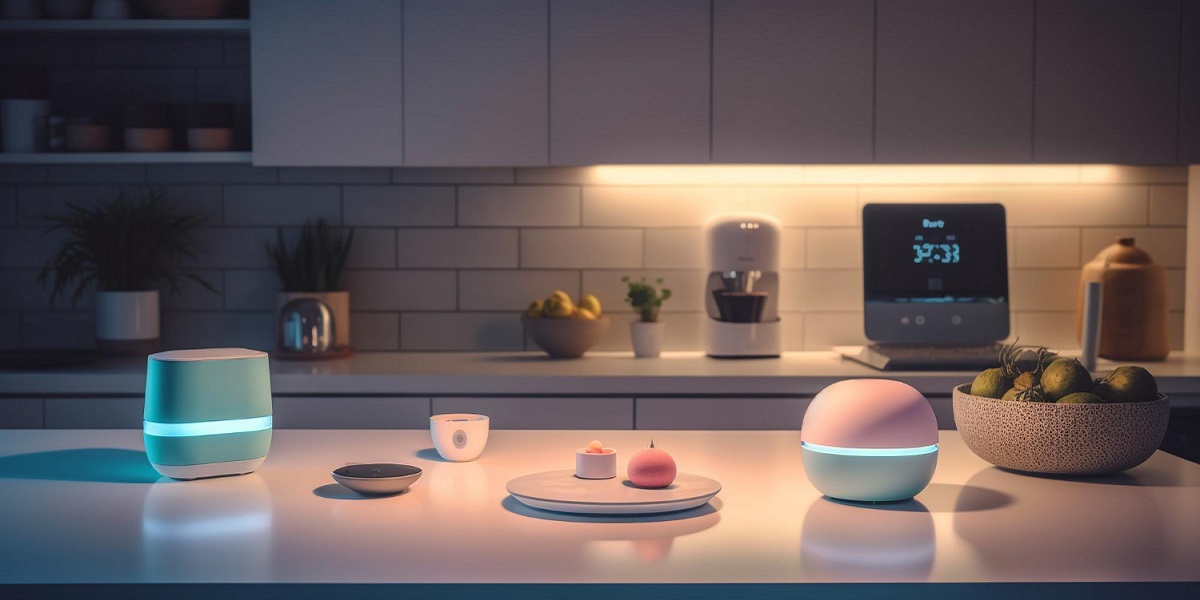
Designing UI For The Voice Search Era
- By Abdullah Sadiq
- 25-08-2021
- Technology
The world of web design is a fast-paced environment. Every year, new trends and opportunities develop, largely as a result of modern technology's entrance.
The web design scene has changed dramatically in recent years, with the introduction of AR and VR options for creating mixed media. The requirement for inclusion and usability has changed the way we develop everything from websites to apps, and video material has improved in quality.
Nonetheless, web design trends have largely remained focused on the visual.
When we hear the word "interface," we usually think of the graphical user interface (GUI), which is the most common way for users to interact with websites. However, users can now connect with their digital tools in a new, more natural way... The voice search era has arrived. It doesn’t matter if you are designing your own website or provide Web Design services to others. The important part is to evolve the design aspects with respect to the latest trends.
Designing for the Age of Voice Search
In the creation of items like Automated Speech Recognition and Natural Language Understanding, the technology sector has made great strides.
Voice recognition accuracy has improved to 90% or higher thanks to advancements in how machines analyze and understand human language. More than ever before, people can communicate with a smart assistant, speaker, or phone-based application and receive accurate results.
Because using speech to communicate with technology is so simple, people have embraced it at a breakneck pace. By the end of the year, voice will account for half of all searches.
We're on the verge of a major transformation in how we interact with computers and other important tools. We need to be ready to embrace this new media as designers and developers. With that in mind, here are some things to consider while developing voice UI.
Determine How to Experiment with Voice
Making a website more "conversational" entails a number of stages. One of the first things any designer or developer should consider is the type of voice-based interactions they want to include in their app or website.
Instead of integrating voice technology into a website, you might establish a distinct Amazon Alexa "Skill" for devices like the Echo. Companies such as Capital One have already invested in this technology so that users may inquire about their balance via their smart speaker rather than opening a laptop and logging into the site.
Create a customer journey map with your client to identify what kind of voice experiences you should be producing for them. You can identify instances where voice interactions might fit into the user flow using this map of interactions that the consumer has with your client on a regular basis.
If clients are frequently asking questions about a brand or a service, for example, a FAQ page with a bot that can answer voice queries could be a great option. The goal of UI design should always be to address issues. Examining the frictions and difficulties that your client's end-users have can assist you to select which way to take with your voice UI experience.
Analyze the Anatomy of Voice Commands
Designers must first understand how voice commands function before they can construct a dialogue flow for their speech UI. Understanding the goal of the interaction is critical to a successful design for voice.
Designers must consider three important criteria while creating a voice:
Intent: The subject and context of the voice command are represented by intent. A request for a specific task is a high utility interaction. For example, your consumers might ask for a list of five-star hotels in a given area through your app. Because the speech algorithm's requirements are explicit, designing for these requests is frequently simple. Low-utility inquiries, such as "hotels near me," are more difficult to comprehend because there is less specificity for the bot to work with.
Utterance: The way a user expresses a command is referred to as utterance. For example, if a customer wants to find five-star hotels in Amsterdam, they can say "show me hotels" or "places to stay." For their voice command UI, designers must consider every variety of an utterance.
Optional Variables: This refers to the additional filters that your voice UI must take into account. The term "five stars" is optional in the case of five-star hotels in Amsterdam. The optional input should supersede default values and provide the search additional depth.
For example, SideChef is a voice-activated recipe software that provides users with narrated instructions and allows them to search for recipes depending on their individual requirements. The software has a number of built-in variables that allow users to tailor their searches based on descriptions such as "vegetarian" or "fast" meals.
Learn Prototyping Dialogue Flows
It takes time and experience to learn how to use a complex UI method like VUI. Prototyping designers will frequently be forced to think like screenwriters, creating a variety of conversation flows to meet the various needs of clients and the various interactions they may encounter.
The following are examples of dialogue flows:
Keywords that lead to a dialogue
Branches that reflect possible outcomes of the discourse
Dialogues for the user and the voice assistant as examples.
Practicing dialogue flows with scripts that depict the back-and-forth between the voice assistant and the user will aid designers and developers in comprehending the different nuances that can occur in a customer-robot relationship.
Remember that while keeping communication conversational and plain is an important aspect of excellent voice UI design, you must also ensure that there is a dialogue flow in place for any topic that may occur between end-users and their apps, websites, or digital tools. Users do not want to feel overburdened or overwhelmed, but they must also be able to fulfill their jobs.
A Few Useful Tips for Voice Search UI Design
Voice UI design can be challenging, especially if you've never worked with the voice as your sole input before. However, once you've gotten the hang of building dialogue flows, the whole thing becomes a lot easier.
As you’re designing, keep in mind to:
Always assure when a task is complete: One of the most important screens for a designer to consider when building a checkout flow for an eCommerce page is the confirmation page. It informs the customer that the transaction was completed successfully and relieves them of any concerns about whether they did the proper thing. Voice UI design follows the same principle. If a voice-activated app is used by your client's end-user to book an appointment with their therapist, they want to know that the appointment was successfully booked and placed on their calendar. Determine how you'll provide your customers with the peace of mind they require.
Create a strong strategy to handle errors: Designers and developers are still experimenting with speech UI in its early phases. As a result, there's a considerable probability that something will go wrong with your applications and tools at some point. It's critical to have a solid mistake strategy in place. Always provide a conversation flow scenario in which the assistant can answer if they don't comprehend or don't hear anything at all. You can also use analytics to discover misinterpretations and improve usability in the future in similar scenarios.
Introduce extra layers of security: Individual voices can now be recognized by voice UI systems like Google Assistant and Alexa. This is a type of biometric security that works in the same way that face or touch ID does. As speech recognition improves, it's more important than ever to make sure you're following the most up-to-date security requirements. For some businesses, additional authentication may be necessary. For things that need payments and transactions, passwords, facial recognition, or fingerprints may be required. Face recognition is used by the Duer voice assistant to approve payments and give meal recommendations based on previous purchases.
Are You Ready to be a part of the Voice Search UI Revolution?
Voice-based user interfaces aren't going away anytime soon.
Developers and designers will almost certainly need to learn how to use speech more frequently as part of their interface strategies in the coming years. The good news is that, while voice as a design tool takes some getting used to, it's simple enough to ensure that your projects are on track. Implementing speech, like any other type of design, entails considering if the interactions and experiences you're providing to end-users are seamless, effective, and valuable.
It's not enough to incorporate voice capabilities into your designs to succeed in voice UI. It's a matter of figuring out how to use voice to make users' lives easier.
Recent blog

Harnessing Social Media: Tactics For Powerful Marketing Success Achievement
Social Media | 25-07-2024
7 Hidden Secrets of MSI Laptop Boot Menu Key
Technology | 24-07-2024




